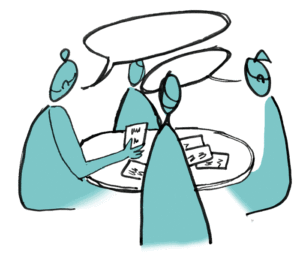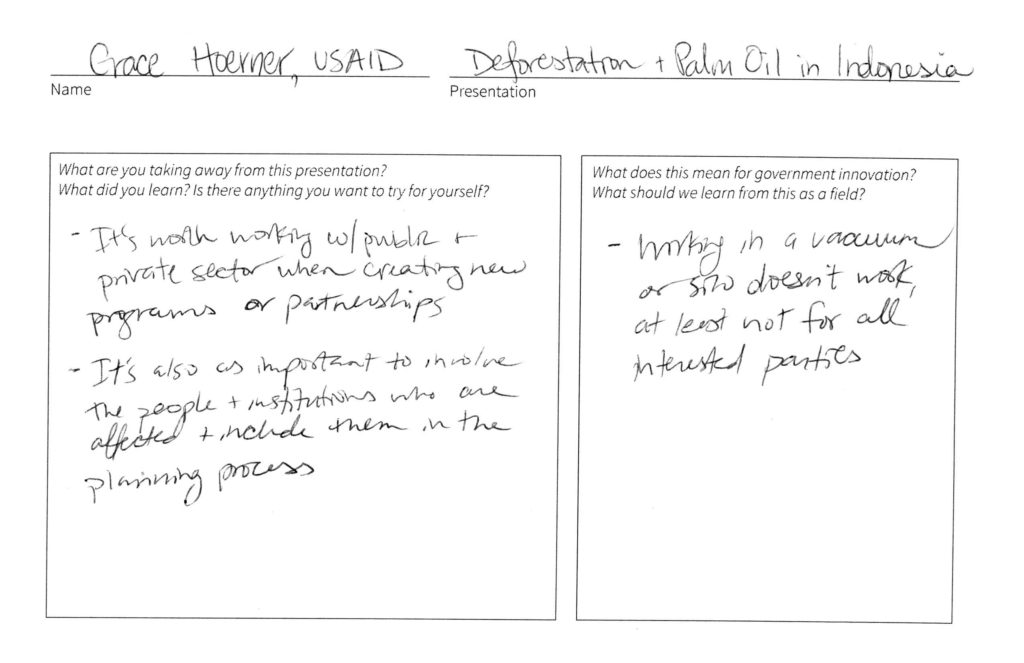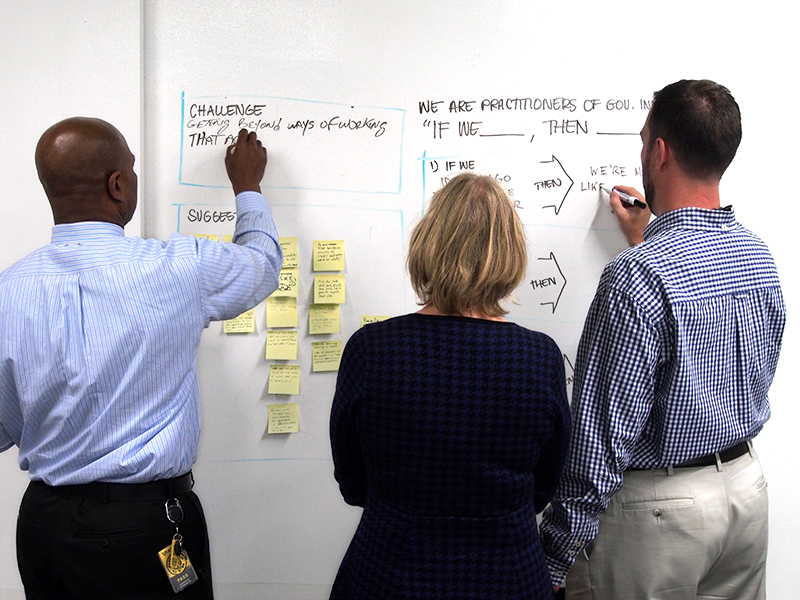An event series that amplifies innovative work already happening in government and encourages civil servants to develop a government-specific mindset around innovation.
As part of a class about Civic Innovation at the New School, my partner De-Ann Abraham and I worked with the Innovation Lab at the Office of Personnel Management (OPM) in the federal government. OPM functions as the human resources for federal employees, managing paychecks, pensions and also training and professional development. The Lab.OPM trains civil servants in design thinking through training workshops as well as facilitated project work. Getting started, we saw a sharp contrast between the culture and mindset within the Lab, versus the mindset of federal government work that surrounded it. We learned that people often loved their time learning about design at the Lab.OPM, but then struggled to implement what they learned when they returned to their agency.
Based on our research, we outlined some differences between the traditional government mindset that civil servants encounter within their agencies and the human-centered design mindset taught at the Lab.OPM
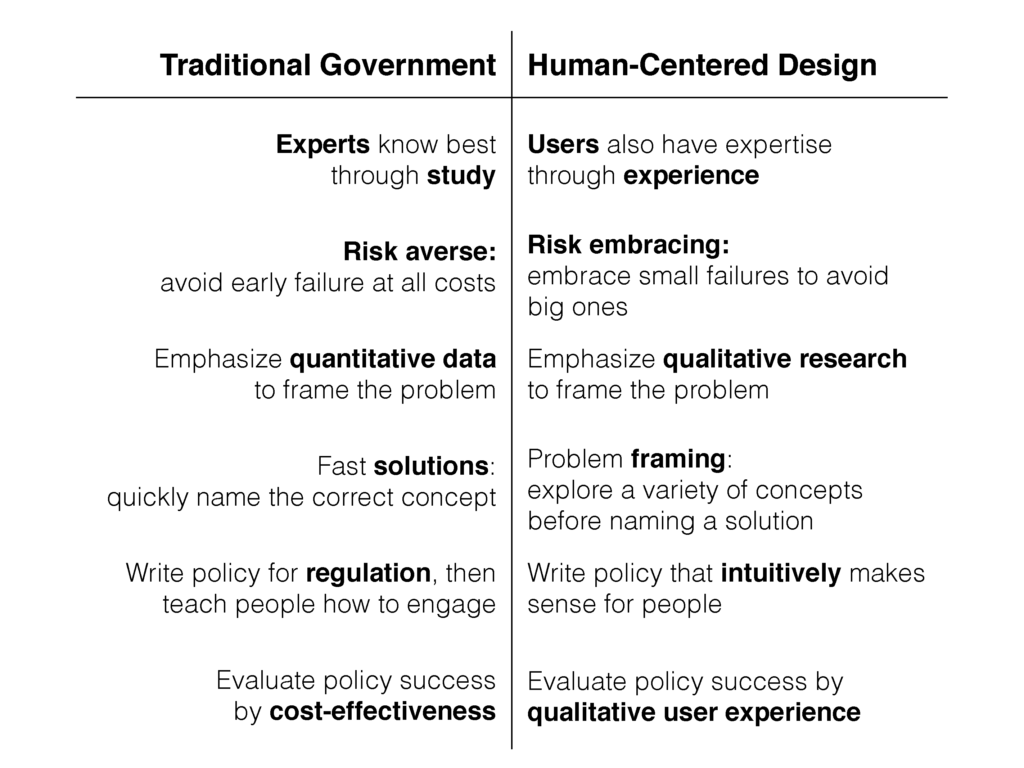
As we learned more about the challenges that civil servants encounter when trying to use design within their agencies, we saw that people tended to focus on the colorful post-its and visualization, elements that are different and controversial within a government setting, more than the actual principles behind design as a practice.
In response, we prototyped an event series that built off of an earlier Lab.OPM initiative called Stories in Innovation. We invited civil servants from all over the federal government to share their learnings and challenges from innovative projects, and to learn from others. This is how we imagined the event series working:
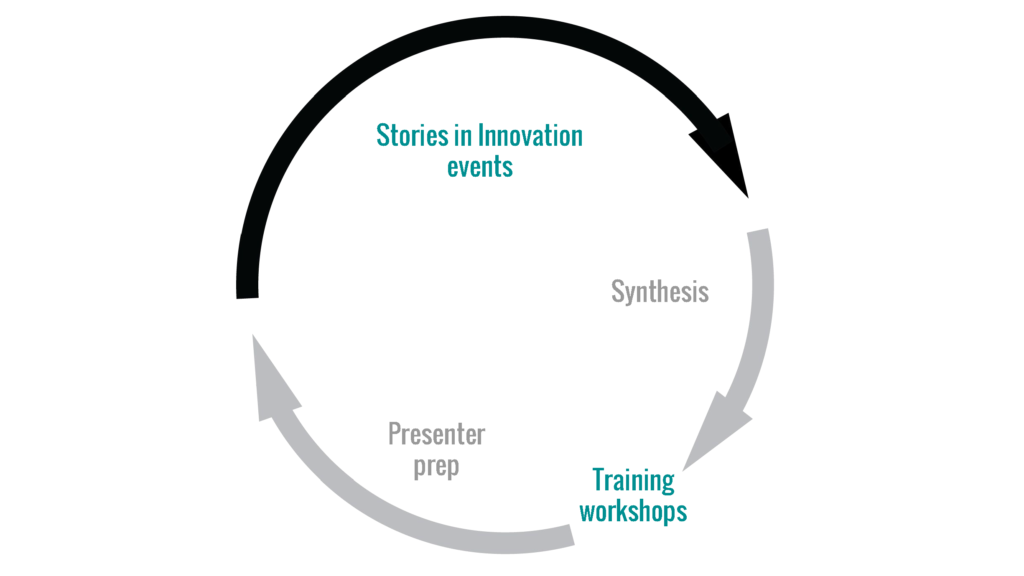
Presenter prep
Before an event, Lab.OPM sends out an open invitation to government innovators. Anyone who would like to present is welcome to submit a story, using a form that asks about obstacles along the way and how those obstacles were overcome. The form encourages people to think about the process of innovation, and to share information that can help to build a government-specific theory behind innovation. Stories chosen for the event are provided with a presentation template that helps innovators communicate these learnings clearly and visually.
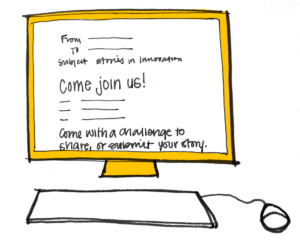
Stories in Innovation event
On the day of the event, The Lab.OPM welcomes participants with snacks and coffee, asking them to sign in and mark whether their email address can be shared with other participants, creating a network of connected innovators. They can also make a name tag, and add a sticker that corresponds to an innovation challenge that they’re currently dealing with. This helps people to find others who are struggling with the same issues. At each event, three presenters are chosen to share their stories. Two shorter slots are left open in between for an open mic – this is a moment when anyone in the audience can share a challenge that they’re currently dealing with, and ask the audience for help. By alternating between current challenges and projects that successfully overcame, the event creates a rich environment of learning from experiences and applying that learning to other situations. During the presentations, audience members are asked to fill out a sheet about what they learned from the presentation, and also what these learnings mean for government innovation. After the event, the sheets are collected by the Lab.OPM to inform their curriculum development.
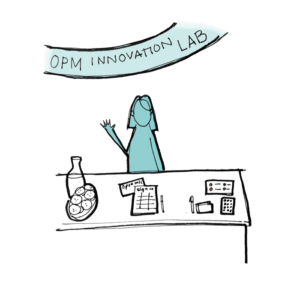
Synthesis & Training Workshops
Currently, the Lab.OPM holds training workshops that focus on the Luma Institute methodology of design thinking. The Stories in Innovation event cycle creates a way for government innovators to influence this curriculum and to slowly shift it to be more oriented towards the challenges and opportunities of innovating in government. After each event, the Lab.OPM team meets and debriefs about the presentations, reviewing the audience feedback sheets. A team member creates a short blog post about insights gained from the presentations, and distributes it to participants. Finally, the team uses the new information to edit their curriculum to include new learnings, and even may invite presenters to share their experience at training workshops in the future.
We prototyped two versions of the event with the Lab, exploring how to engage participants in connecting their own specific challenges and projects to larger scale learnings and principles for government innovation as a whole.
At the second prototype, audience members filled out feedback sheets to participate in a larger conversation about what each case study means for government innovation as a field.
Lab.OPM curriculum building on Stories in Innovation could combine these learnings with private sector case studies and examples.
Stories in Innovation continues to be hosted by the Lab.OPM – they share upcoming events along with other news on Twitter.




